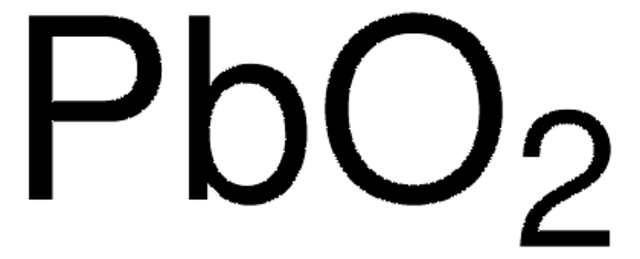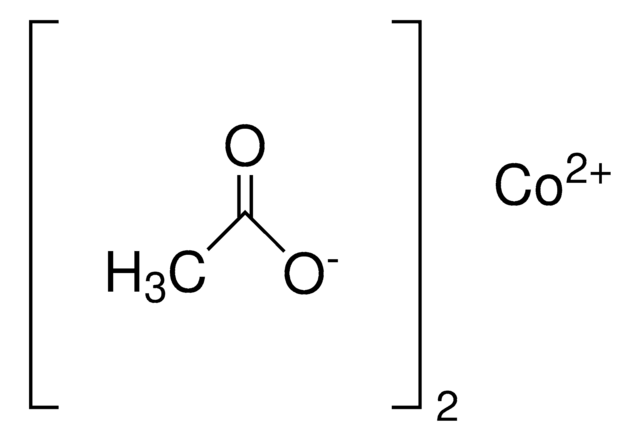467790
Lead(II) nitrate
≥99.95% trace metals basis
Synonyme(s) :
Lead dinitrate
About This Item
Produits recommandés
Niveau de qualité
Essai
≥99.95% trace metals basis
Forme
solid
Pertinence de la réaction
core: lead
Impuretés
<500 ppm total metallic impurities
Pf
470 °C (dec.) (lit.)
Traces d'anions
chloride (Cl-): ≤0.001%
Traces de cations
Ca: ≤0.005%
Cu: ≤0.002%
Fe: ≤0.001%
K: ≤0.005%
Na: ≤0.02%
Chaîne SMILES
[PbH2++].[O-][N+]([O-])=O.[O-][N+]([O-])=O
InChI
1S/2NO3.Pb/c2*2-1(3)4;/q2*-1;+2
Clé InChI
RLJMLMKIBZAXJO-UHFFFAOYSA-N
Vous recherchez des produits similaires ? Visite Guide de comparaison des produits
Catégories apparentées
Application
Mention d'avertissement
Danger
Mentions de danger
Classification des risques
Acute Tox. 4 Inhalation - Acute Tox. 4 Oral - Aquatic Acute 1 - Aquatic Chronic 1 - Carc. 2 - Eye Dam. 1 - Repr. 1A - Skin Sens. 1B - STOT RE 1
Organes cibles
Blood,Central nervous system,Immune system,Kidney
Code de la classe de stockage
5.1B - Oxidizing hazardous materials
Classe de danger pour l'eau (WGK)
WGK 3
Point d'éclair (°F)
Not applicable
Point d'éclair (°C)
Not applicable
Équipement de protection individuelle
Eyeshields, Faceshields, Gloves, type P3 (EN 143) respirator cartridges
Listes réglementaires
Les listes réglementaires sont principalement fournies pour les produits chimiques. Seules des informations limitées peuvent être fournies ici pour les produits non chimiques. L'absence d'indication signifie qu'aucun des composants n'est répertorié. Il incombe à l'utilisateur de s'assurer de l'utilisation sûre et légale du produit.
EU REACH SVHC Candidate List
EU REACH Annex XVII (Restriction List)
Faites votre choix parmi les versions les plus récentes :
Déjà en possession de ce produit ?
Retrouvez la documentation relative aux produits que vous avez récemment achetés dans la Bibliothèque de documents.
Les clients ont également consulté
Notre équipe de scientifiques dispose d'une expérience dans tous les secteurs de la recherche, notamment en sciences de la vie, science des matériaux, synthèse chimique, chromatographie, analyse et dans de nombreux autres domaines..
Contacter notre Service technique













